Systematic reviews are based on studies (sometimes called 'component studies'). The process of assigning reports to studies is called "Definition of Studies" in RevBase and best explained by an example:
You identified three reports eligible for your review:
Kamp et al. (1980)
Myer et al. (1999)
Smith et al. (2000)
Kamp reported one trial
Myer reported the same trial as Kamp
Smith reported two trials, both were different to the trial in Kamp (and Myer)
You would define three studies for data extraction and reporting/analysing in your review:
Kamp1980 (reported in Kamp1980 and Myer1999)
Smith2000a (reported in Smith2000)
Smith2000b (reported in Smith2000) Because a systematic review is based on studies and not reports/references each
report has to be assigned to a particular study. Usually, a sudy is
named according to the first author and publication year of the main
report of the study. The system suggests a study name on this basis but
the user is free to overwrite it. After you definitely included at least one report (consensus!) go to Define Studies in the left main menu. An overview of all included reports will be shown (make sure that Reports is selected in the drop-down "List ordered by" at the top). Clicking on New in the "Study" column will allow you to assign a study to this particular report. 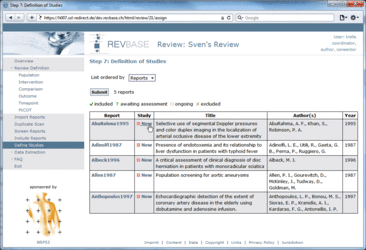 At the top left of the pop-up window (red rectangle) you can define the study name and provide additional information related to the newly defined study. 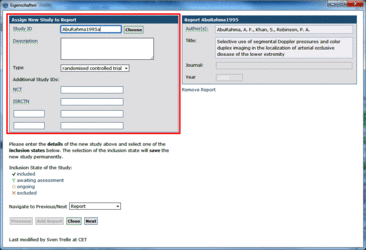 On the top right you see information related to the report you are currently working on. After editing the study information you need to define the inclusion status of the study (this will usually be "included"; red rectangle). 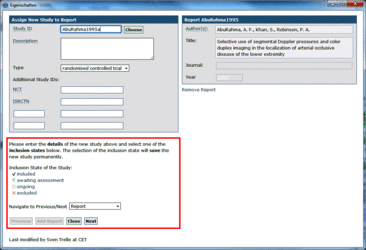 Do not forget to save your work: either click the Close or Next button (by clicking on Next you will be able to define additional studies, clicking on Close will bring you back to the overview). The newly defined study will be shown in the "Study" column.  Assigning additional studies to a report works the same way as assigning the initial study to a report. Only the entry differs slightly: Click on the red square with white cross in the "Study" column (appears after clicking Define Studies in the left menu).  The already familiar pop-up window will appear and you will be able to define the new study. If you want to assign an already defined study click the Choose button. 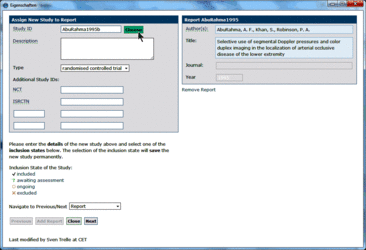 A new pop-up window will appear showing all already defined studies. Select the study that you want to assign to the report by clicking on the ID  and proceed as usual. Click on the red square with white cross in the overview table (appears after clicking Define Studies in the left menu). The already familiar pop-up window will appear. Click on the Choose button.  A new pop-up window with a list with all already defined studies will appear. Select the study that you want to assign to the report by clicking on the ID  and proceed as usual. Click on the study ID from which you want to remove a report. For example, select Studies in the "List ordered by" drop-down menu in the overview (click Define Studies in the left menu to go to the overview). Do not forget to press the Submit button.  An overview table of all already defined studies with the corresponding reports will be shown. Select the study from which you want to remove a report by clicking on the Study ID in the "Study" column.  Click on the Remove Report text below the report description of the report that you want to remove (on the right side of the window).  The report will now be removed from the study. 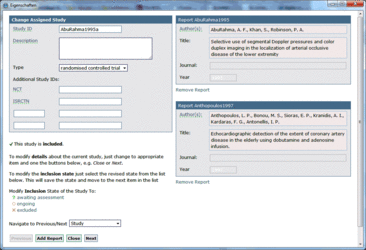 You are able to remove additional reports from this study if you want. Overview before removal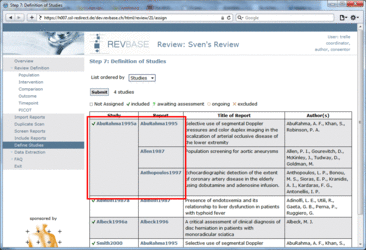 Overview after removal Overview after removal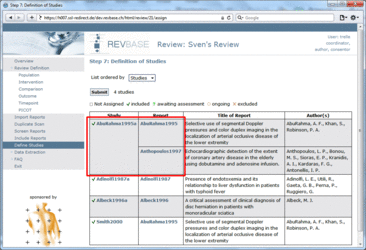 Documents related to reports/references are also automatically assigned to the studies related to that particular report. No, there is no consensus for the study definition step. | 


